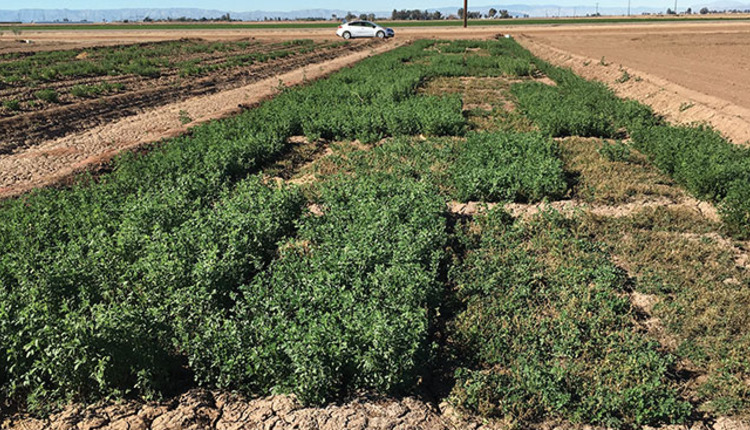
Plant breeders have been very successful at improving the yield of corn, soybeans, and most other crops. But in recent years, we’ve seen alfalfa yield stagnate; at best, yield enhancements have been minor compared to other crops.
What I’m talking about is boosting the inherent potential of alfalfa to grow more forage. We have seen amazing improvements in disease and pest resistances in alfalfa over the past 50 years. New cultivars have better tolerance to various environmental stresses — heat, cold, drought, and so on — than older cultivars as well. Together, new cultivars are often more persistent than older cultivars, and, of course, this means yield is higher across the years of a stand. I think of these improvements as playing defense — preventing yield losses due to the whole host of factors plants face while growing in the field.
But what about the engine within the alfalfa plant that produces yield? I think of it as the offense of the plant. How can we boost the offense to put more points on the board — more hay in the stack? And here is where breeding has run into more difficulty.
Fall dormancy matters
One possibility to enhance yield is to modify the fall dormancy (FD) of a cultivar — in general, as dormancy declines, the yield improves. So, if you live in the Midwest and grow FD 4 varieties now, you could probably improve yield by switching to FD 5, provided the winter hardiness is adequate. So, one way alfalfa breeders have boosted yield is to develop less dormant varieties that still survive in the regions they are planted.
One of the main objectives of my current research program is to understand the genetic basis of dormancy so that we can manipulate it more easily. We are refining the standard test to measure dormancy. One experiment demonstrated that fall dormancy could be accurately assessed both in the traditional standard test that evaluates plants grown widely spaced in the field as well as in solid seeded yield trial plots. Using yield trials to measure dormancy would help classify cultivars because a separate dormancy trial would not be necessary.
My laboratory is also researching the genetic control of fall dormancy. The objective of this research is to develop methods to select for plants that have the desired dormancy classification. Plant breeding at its most basic level is a numbers game — the more plants we can observe, the better progress we can make. And the second rule of plant breeding is that we have to evaluate plants in the field to ensure they are tough enough for farm use.
If we can select seedlings with the appropriate dormancy in the greenhouse, then we can maximize the number of plants targeted to a particular region that we can evaluate in the field. Knowing the genetic basis of dormancy will also enable us to select for cultivars of specific dormancies more easily and to adapt new germplasm to a particular region quickly.
Genomic selection
The third way we are attempting to improve yield is to select for yield indirectly using genetic markers within a given dormancy level. For a given dormancy level, the ability to select for plants that have all the resistances and tolerances for multiyear persistence together with ideal forage quality and that also have higher yield has proven difficult.
We have demonstrated in principle that we can select plants for higher yield based only on the evaluation of a set of genetic markers, something called “genomic selection.” Normally, breeding cycles of alfalfa take multiple years — alfalfa is a perennial crop. If we can instead use markers to predict the yield of plants, we can turn a cycle in six months.
The idea with genomic selection is that we can make two or more cycles of yield selection using markers and then return to the field to make field-based selections. In this way, we can boost yield faster than normal. We are currently increasing seed of a population selected with markers alone, and we will plant a yield trial in the spring in Northern California, Wisconsin, and Cornell to see if the marker selection was effective.
Traditional breeding methods have not been as effective at boosting yield potential as they have been at improving disease, pest, and stress tolerances. With a better understanding of fall dormancy, through selection for dormancy itself and the targeted use of genetic markers, we believe better yield potential is in the forecast for alfalfa cultivars in the coming years. With the challenges posed by limited water in the West, by a variable climate everywhere, and by ever-changing disease and pest pressures, any ability to boost yield potential will be most welcome.
This article appeared in the November 2016 issue of Hay & Forage Grower on page 6.
Not a subscriber? Click to get the print magazine.

